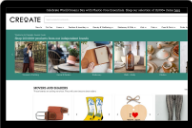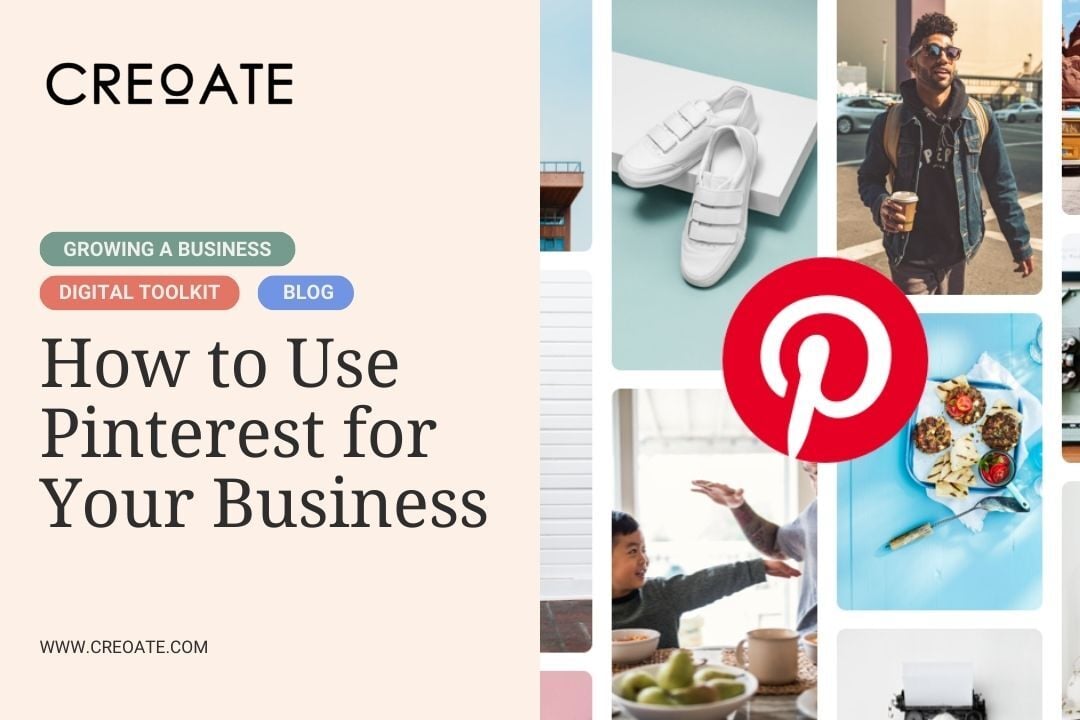People love to claim that email marketing is dead.
And yes, we do get a lot of emails. But email marketing is far from dead — it’s just a little tougher than it used to be.
It’s worth it, though, when you can expect to make an average of £36 for every £1 you put in. With stats like that, you’ll be hard pushed to find a marketing channel that’s going to work harder for you.
But you probably have some idea of that already, which is why you came to take a look at this post. We send a fair few emails here at Creoate, and we wanted to share some of our findings to help you make the most of your email marketing. The great thing about email marketing is that your hard work pays off really quickly; implement even a few of these small business email marketing tips and you should see an immediate boost (although every business, and every audience, works differently — we’ll get to that in a bit).
8 Email Marketing Tips for Small Businesses
- Capture email addresses smartly
- Create great content
- Iron out deliverability issues
- Automate what you can
- Make it personal (and personalised)
- Make sure everything is mobile optimised
- Get professionally-designed templates for key sends
- Test everything
For now, let’s dive straight into our top tips.
1. Capture email addresses smartly
For your email marketing strategy to work, you need to have some people to email — that’s a given.
For anyone who is already creating an account, or has made purchases through your website, here’s naturally your first opportunity. Just remember that countries operating under GDPR require you to ask people to opt in to different kinds of emails, and it’s really important you stick to these rules.
Add a couple of tick boxes at the end of your checkout page asking people whether they’d like to opt in for different types of sends — one could be newsletters, the other could be deals and discount information. Whichever makes most sense with your email types.
But outside of your existing customers, are you collecting email addresses? Add an embedded newsletter sign up form to your website, add it as a link in your Instagram bio… wherever you can capture anyone who likes the look of your brand, but isn’t quite ready to buy yet.
Top tip! Remember, the fewer fields someone has to fill in to subscribe to your emails, the better. Most often you’ll just need a first name and an email address, or even just an email address.
2. Create great content
A quick google will bring up umpteen email marketing tips, tricks and hacks — in case you missed it, there are eight on this page alone!
But it’s worth mentioning up top that, while there are some quick fixes, a successful email marketing strategy requires devoting time and energy to making quality content; if people actually like reading your emails, a huge part of the battle is already won.
Part of this comes down to giving yourself enough time to create quality content, or outsourcing this task to someone who does. Another is making sure it’s not all ‘sell sell sell’.

Take the Books That Matter newsletter, for example. As a keen reader, I open each week’s so-called ‘Bookish Update’ without fail because I know it’s going to contain some new fiction recommendations I’ll love. No matter when it arrives in my inbox, or what the subject line is, I’ll be diving in.
But how do you know what your subscribers want to see? Ask them! Send out surveys, speak to some in person if you can and, most importantly, experiment with different kinds of content to see which are best received.
3. Iron out deliverability issues
If you notice there’s a big discrepancy between how many emails you send, and how many are delivered (a bounce rate of over 1%, let’s say — ideally it should be much less), it could mean there’s something in your setup which is causing your emails to be flagged as spam, or marked as unsafe.
Here are a few deliverability best practices to help solve the problem:
- Try to send a consistent number of emails — a big spike in the number you’re sending, or a big shift in when you’re sending them, could be picked up as a red flag
- Remove unengaged users — give your list a spring clean and remove people who aren’t engaging with your content. A low average open rate can reflect badly on you as a sender
- Avoid overly salesy or spammy subject lines — ‘FLASH SALE TODAY!!! Save cash £££’ is a drastic example, but shows you what to avoid; shouty caps, dramatic punctuation, and reference to money/cash/£££ etc
- Include your brand name in the ‘from’ field — if this is currently set to your own name, or something generic like ‘hello’ or ‘noreply’, this could be the culprit
We could (and will) do a whole post on email deliverability because there are so many things that can impact it, and it can be really frustrating to not be able to reach your whole list. But if you’ve tried all of the above and still aren’t getting anywhere, we recommend reaching out to your email marketing platform directly to see if they can offer some tailored advice.
4. Automate what you can
We know that so many of you are either one-person businesses, or a very small team. Forget just juggling marketing channels; you’re juggling logistics, customer service, sales, finance and HR, too. If we don’t say it enough already: kudos!
Setting up email automations will save time, and also allow you to send the right message to your customers, and leads, at the right time. If someone subscribes to emails from your site, you might want to set up an automation with an email confirming their subscription, then one introducing you and your business, then one with your most popular content. You can set the time between each send, and also add conditions — so if someone clicks on any of the links in the first one, you might deduce they’re close to wanting to purchase, so you might send them a discount code.
The great thing about automations is that once you have them set up, they’ll continue to work away in the background, essentially bringing in ‘passive’ revenue. So even if you’re too busy to put together any campaigns one week, your automations are there to pick up the slack.
5. Make it personal (and personalised)
It’s generally acknowledged that emails which are more personal are better received.
This doesn’t just mean ‘Hi, {first name}!’, it means tailoring the content of your email depending on how the recipient has behaved in the past (what they’ve bought or added to cart, which emails they’ve opened), and what they’ve engaged most with (what do they open, and where do they click).
It also means making the email feel like it’s coming from a personable brand, rather than a faceless corporation. You may find that sending your emails from ‘[your first name] at [your brand name]’ gets a better response than your brand name alone.
There are other considerations, too. Like is your email even written in the recipient’s language? Are they literally able to engage with and read it? Translations involve quite a bit of work and effort, but are definitely worth trying if a large proportion of your audience speaks a different language.
6. Make sure everything is mobile optimised
When you’re building and sending emails from your desktop or laptop, it’s easy to forget that they’ll most likely be opened on mobile.
Make sure you test a version of each email on your phone (or, ideally, both an Apple phone and an Android phone) to make sure everything formats properly, and is readable on a smaller screen.
That’s like mobile optimisation phase one. Phase two is building the best possible version of a mobile email possible. Depending on your email marketing platform, you may be able to exclude content from the mobile version of the email (to make it less busy and easier to digest on the move), or show a different block of content altogether.
7. Get professionally-designed templates for key sends
Your email marketing platform most likely comes with a bunch of different email templates for you to work with. These are fine to get you started, but once you have a more established sending pattern, it’s worth roping in a freelance designer to create a custom, onbrand design for your key sends.
If you’re not ready to work with a designer yet, see what you can do yourself using a tool like Canva.
8. Test everything
Our last and most important point is: test everything! Your email marketing platform should let you ‘A/B test’ your emails, meaning it splits your audience and sends a different version of your email to each half, so you can then see which performed better.
Test everything: different subject lines, emojis, different ‘send’ names, different designs, different content, different buttons… just remember to only change one thing each time so you can clearly see what had an impact.
There’s no place for assumptions in email marketing; test properly and regularly, and you’ll find yourself often surprised. A plain text email may in fact outperform a flashy, professionally-designed one. Adding a rocket emoji to the open line might skyrocket your open rate. By continuing to test, you’ll continue to learn so much about your customers.
Final thoughts
Email marketing is a huge opportunity, so expect a lot more posts on this in the future! Is there one thing you’d like to better understand about email marketing? Pop a comment below and our marketing team will help you out where they can!
Not registered with CREOATE yet? Sign up now and start selling wholesale with us today.
Related articles:
Browse Popular Categories at CREOATE: Wholesale Jewellery | Wholesale Gifts | Wholesale Stationery | Wholesale Beauty Products | Wholesale Mugs | Wholesale Homeware | Wholesale Pet Supplies | Wholesale Gourmet Food | Wholesale Garden & Outdoor | Wholesale Baby & Kids Products
Browse Trending Collections on CREOATE: Wholesale Halloween | Wholesale Mother's Day Gifts | Wholesale Father's Day Gifts | Wholesale Valentine's Day Gifts | Wholesale Spiritual Supplies
>> View all








